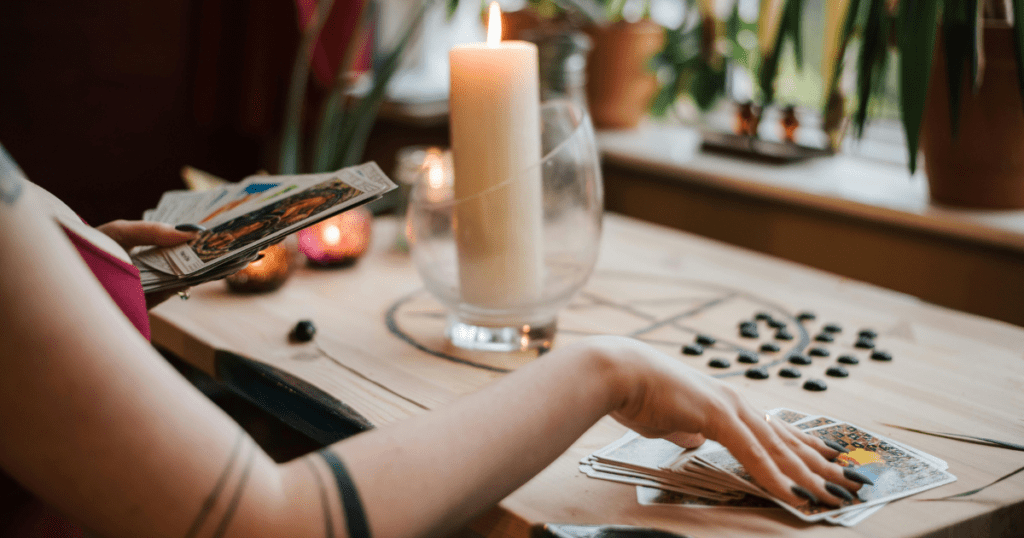In this blog series, I’m exploring the link between Jungian archetypes and the major arcana of the tarot deck. To read more about it, check out my introduction article, which provides context for my thoughts, a tiny bit of background on Jungian archetypes and tarot, and information about the first archetype pairing, The Innocent (Jung) and The Fool (tarot.) I also wrote about The Lover (Jung) and The Lovers (tarot.) Today, I’ll be examining The Ruler archetype and the tarot card The Emperor.
The Ruler and The Emperor
The Ruler is an exciting and versatile archetype. The Ruler can be a kind and benevolent queen, working for the good of her people and acting as a guiding, mortal presence. The Ruler can also be a vicious dictator, acting abusively towards their inner circle and terrorizing the general populace. The Ruler can be a parent figure, who guides their children with either a gentle hand or a controlling one. President Snow in The Hunger Games, Mufasa in The Lion King, and Miranda Priestly in The Devil Wears Prada are all examples of The Ruler in popular culture. While this archetype is versatile and all of these characters are quite different from each other, they have a lot in common, as well.
The Ruler archetype deals with power and leadership, control and structure. Their greatest fear is loss of control or power–yes, even the good ones–and they act accordingly. For a benevolent ruler, loss of power could be scary because there are evil forces at work that seek to take their power and make negative changes. Or maybe, despite their goodness, they are drawn to power for their own gratification, and that is an inner conflict you can explore. For a less benevolent ruler, they may simply love having power over people and get pleasure from inflicting pain or hardship. Or they may be looking to gain material things, like money.
The Emperor is the fourth card in the major arcana. In the traditional Rider-Waite deck, The Emperor is portrayed as a man with a long white beard (representing his wisdom,) red robes (representing his passion,) and a severe expression on his face. He sits on a large throne adorned with Ram’s heads, which create a connection to Aries and Mars. He wears a crown (representing his authority) and carries a golden scepter (an Egyptian ankh, symbolizing life) in one hand and an orb (symbolizing the world he rules over.) Under his robes, he appears to be wearing a suit of armor (symbolizing protection,) and the background is a fiery orange mountain range. A small river flows through the mountains, letting us know that despite his strength and power, The Emperor has an emotional side to him.
When The Emperor appears to you in a reading, it often means that you have taken on some kind of a leadership role. You may be acting as a breadwinner, protector, “rock,” or parental figure. While this card is traditionally portrayed as a man (there is an Empress card that has a lot to do with nurturing and comfort) we of course know that people of all genders can take on these roles; maybe you’re a parent, a boss, a community leader, or an eldest daughter.
The Emperor, like The Ruler, has a lot to do with power. Maybe you seek power, or maybe it’s been handed to you. It also has to do with rules, regulations, law, and order: maybe you need to put up boundaries to make your life less chaotic, develop systems, or put guidelines in place for yourself and others. The Emperor can also be interpreted to be about wisdom; think of his long, white beard, and how many years he had to work to attain his wisdom. What could this card be saying to you about your hard-earned knowledge and expertise? Are you a coach, a teacher, or even just a wise friend who is able to offer insight to the people around you?

How do I incorporate The Ruler archetype and The Emperor into my story?
As we’ve already discussed, The Ruler can be a villain or benevolent. You can merge them with other archetypes, like The Hero or The Lover to give them more dimension, like the small blue river that runs in the background of The Emperor. Giving The Ruler that emotional core will make them more well-rounded and less like a one dimensional tyrant or a completely pure and unselfish leader.
Maybe in your story The Ruler is your main character; a monarch, struggling with the duties of their position, working to maintain equilibrium. More often, however, we see The Ruler as a secondary character, be it an antagonist, a parental or mentor figure, or a distant leader that the main character must answer to.
If you have a tarot deck, find The Emperor and take a look at it. If not, look up a picture of The Emperor, perhaps taking a look at a few different versions of the card. What information do these images give you about the character archetype? Like the river that runs through the background, what depths will you give your character? Look at The Emperor’s crown: what is the source of your Ruler’s power? Look at the strong stone throne that The Emperor sits upon. Remember, this character seeks to gain or maintain control and create structure. What structure will your character put in place? Why do they want control, and how do they seek it?

 It can
It can 









Leave a Reply